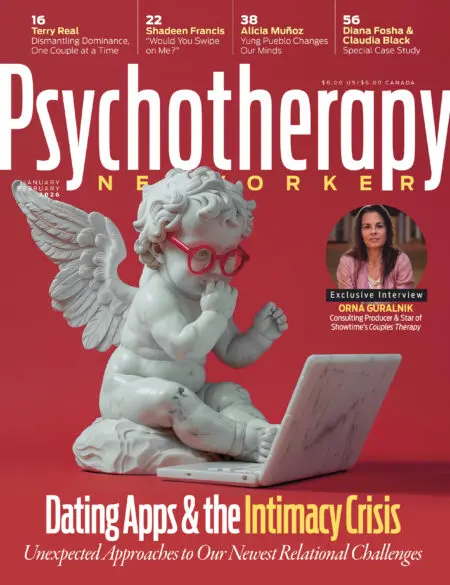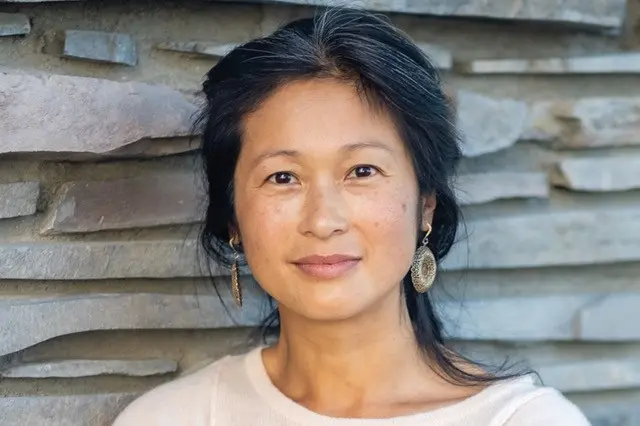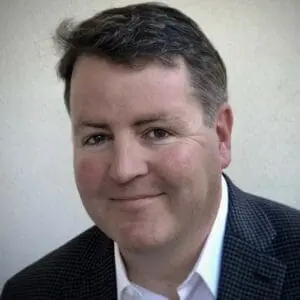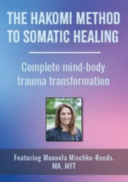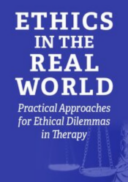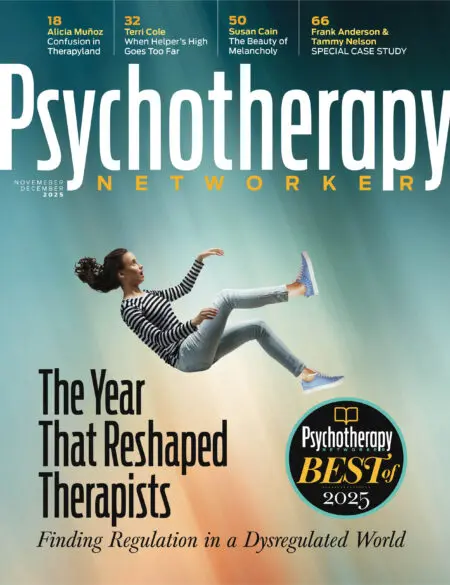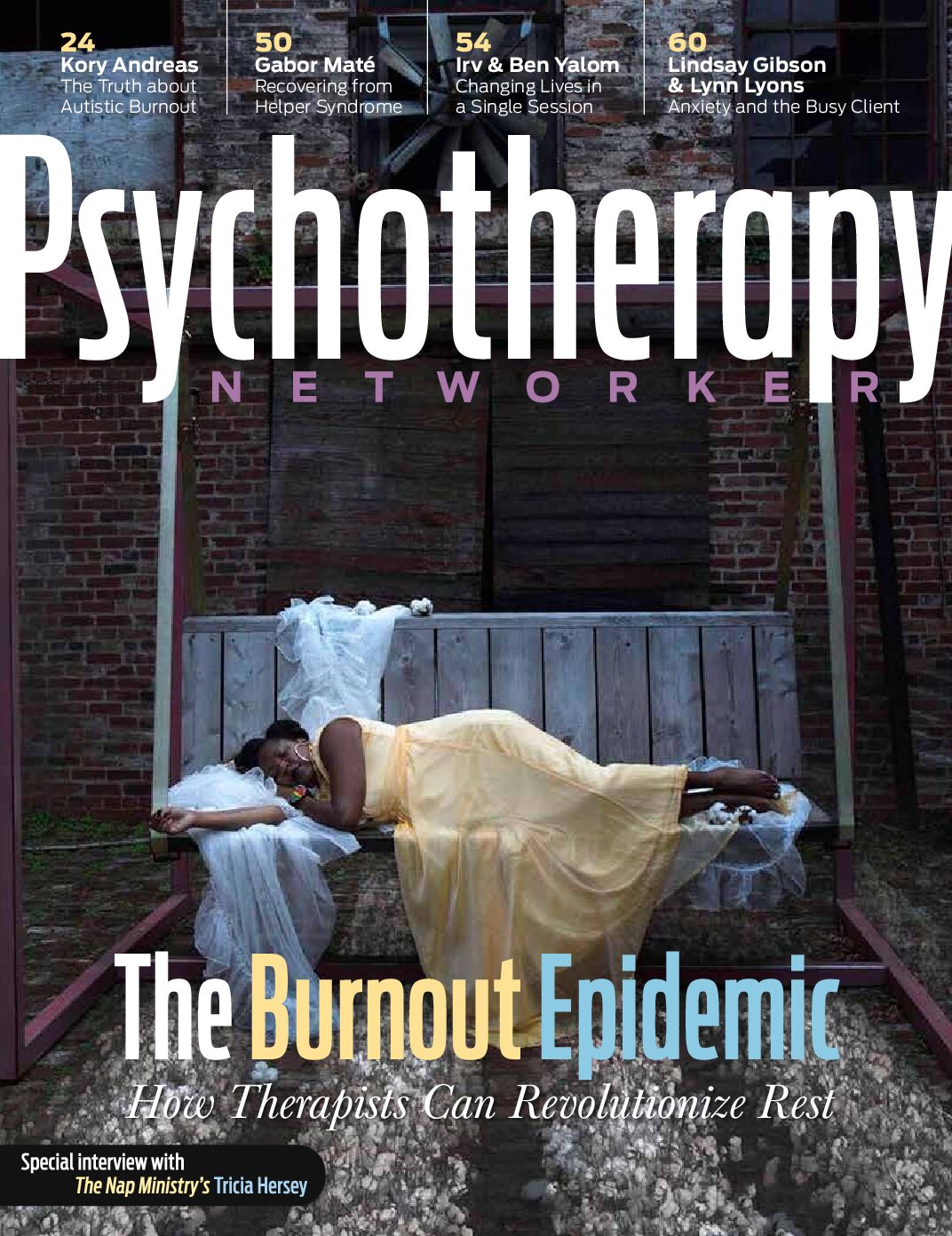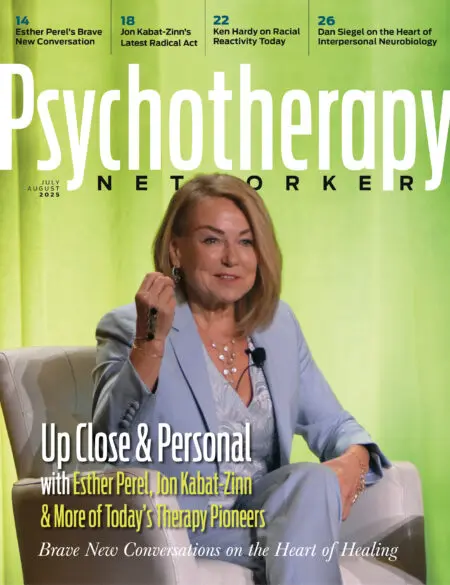Enjoy the audio version of this article—perfect for listening on the go.
For many people, trauma isn’t just a singular experience—it’s something they were born into, so ingrained in their day-to-day life that they don’t recognize it for what it is.
This is the kind of trauma therapist Linda Thai would like you to know about. Thai is especially well-versed when it comes to trauma treatment, having worked with organizations like the Trauma Research Foundation, the Asian Mental Health Collective, and Fairbanks Memorial Hospital. She’s keynoted for the U.K.’s Royal Society of Medicine and the National Education Association, as well as at the Oxford Trauma Conference and the Psychotherapy Networker Symposium. As a therapist, author, educator, coach, and storyteller, Thai is candid about her journey as a survivor of the post-war Vietnamese Boat People diaspora that dropped her at the intersection of trauma, addiction, attachment wounding, and grief.
Thai found healing and recovery in yoga, which helped her process the trauma stored in her body. She studied Somatic Experiencing, Brainspotting, Internal Family Systems, Trauma-Informed Stabilization Treatment, Havening Touch, and Flash Technique. She also caught the attention of renowned trauma expert Bessel van der Kolk, with whom she’s partnered to lead workshops aimed at healing attachment trauma. And along the way, she traveled the world, bringing her expertise to thousands.
Thai’s unique approach draws from the “wisdom portal” of her ancestors. After settling on the traditional lands of the Tanana Athabascan people (modern-day Fairbanks, Alaska), she learned to live off the land with a combination of “mutuality, reciprocity, kindness, and collective responsibility.” She and her husband live in a 550-square-foot cabin they built by hand, heated by firewood they cut themselves. They pick wild berries, raise animals, fish, and hunt.
No, not everyone needs to take up woodworking to process trauma or combat the traumatic forces of sexism, racism, homophobia, and colonialism that exist in our systems and institutions. But some of the most profound healing, Thai says, comes from time-honored cultural practices, like a reverence for nature and community. She believes we must buttress our mainstream therapy approaches and techniques with an acceptance that at the heart of healing is something more innate—instinctive practices that may feel more elemental than intellectual.
Thai recently sat down with us to share how we can all cultivate more wholistic healing practices, with characteristically honest reflections on her own journey and the spiritual act of finding your way back home.
Ryan Howes: What drew you to somatic treatment for trauma?
Linda Thai: Quite simply, yoga and meditation saved my life. I was in addiction recovery, and these practices helped connect me with my body in real-time. So I started teaching them in addiction and trauma recovery settings. I also got into Bessel van der Kolk’s work, IFS, Sensorimotor Psychotherapy. I was learning all of that even before I started studying to become a therapist. I’ve also benefited a lot from studying attachment theory and applying attachment-based principles to my work.
But I’ve never felt any of it truly captures the fullness of what it means to be human: interdependent and in inter-relationship with the world. Psychotherapy hyperfocuses on dyadic relationships: between two partners, between parent and child, between therapist and client. We may see families; we may even facilitate groups—but we’re still only focusing on human relationships.
As a society, we’ve been severed from the holistic, expansive experience of our relationship to nature, to our bodies, to our ancestors, and to time itself. You could say we have an insecure, avoidant, anxious, disorganized relationship with all those things.
I immigrated to the United States as an adult. But as a toddler, I was a refugee, first in Malaysia and then Australia. Home ceased to exist long before we left it, and there was no home to go back to. I then became a refugee from a country called The Body. It put me in close proximity to all kinds of loss, including the embodied experience of secure attachment and the full experience of being human.
This is common for all refugees—religious refugees, people fleeing domestic abuse, trans youth fleeing their families, abducted and enslaved Africans, transracial and transnational adoptees. They’ve all experienced forced displacement and disrupted relationships with themselves and their sense of home. Disrupting the relationship between a people and their home is the first act of disembodiment, and once people are disembodied, they’re easier to make compliant. That’s colonialism: the trauma of colonialism is the trauma of disconnection.
This process of colonialism happens with all waves of immigrants that were othered and all indigenous people who were invisiblized. Speaking as an Asian-bodied person, my people have colluded with the model-minority myth, because it gives us more proximity to whiteness and separates us from other Black and Brown bodies. You can learn about this process as information to put it into your head, but there’s a metabolic process of grief that also takes place within the body.
RH: Much of your work focuses on intergenerational trauma and grief. How are those connected?
Thai: In graduate school, I learned that the dynamics of a dysfunctional family are “don’t talk, don’t trust, don’t feel.” Not naming your losses, not naming your sadness, not crying: those are survival strategies, especially when our rituals and ceremonies for embodied grieving have been taken from us.
As Resmaa Menakem reminds us, when trauma is decontextualized, it looks like culture. It looks like stoicism. It looks like sucking it up, or stuffing it down, or rubbing some dirt on it. And it also looks like the shaming and blaming of emotions in others and in oneself.
Parents with unresolved losses and traumas aren’t able to be there for their children in developmentally appropriate ways. And then the children learn not to cry, not to feel. You see the individual informing the family system, which informs the culture. And now we have a society that, as Francis Weller says, is replete with mechanisms for amnesia and anesthesia.
RH: Which leads to addiction for a lot of people, right?
Thai: Exactly. When I worked in addiction recovery, we’d do a timeline of our drug use alongside a timeline of our transitions, losses, and traumas. It showed how unresolved losses often become the platform for using. Some losses, like moving schools as a child and losing friends, may not have registered as a trauma, but if your parents didn’t acknowledge the losses or provide resources for support, then it most certainly was traumatic.
In the absence of an embodied way to grieve, and in a culture of patriarchy and unhealthy masculinity, the acceptable go-to emotion is anger. In my work, we often looked at fury and rage as indicators of unresolved grief and trauma. And we bring mindfulness awareness to the physical sensations of those emotions, because that’s what emotions are: physical sensations.
RH: What does healthy grieving look like for you?
Thai: Grief is a primal human need, and it’s a solitary journey that we can’t take alone. To grieve, you need to be in community, some sort of group, where the fullness of your body’s need to express grief is welcomed. It’s important we reclaim cultural rituals that make space for song, story, movement, silence, togetherness, and aloneness. You can see these elements in African American funerals, Vietnamese funerals, funerals with people who are hired to wail—professional keeners—which come out of several European traditions.
Once we expand our conceptualization of what it means to be securely tethered and have a sense of place in the world, we can then get curious about the things that were taken from us (that we may not have realized shouldn’t have been taken from us) and the things that were given to us (that we may not have realized shouldn’t have been given to us). That applies within our family systems and on a societal level. In the latter sense, collective trauma requires collective healing.
We need to come together every new moon, every full moon—something to give us a sense of rhythm. We need to be in community as a witness, as a container. And when the fruit of grief ripens in the moment, we need to know it, to carry it. Just like how we metabolize food, when we metabolize grief, we create fuel for our growth, for our humanity.
Linda Thai
Linda Thai, LMSW, is a trauma therapist who specializes in cutting edge brain- and body-based modalities for the healing of complex developmental trauma.
Ryan Howes
Ryan Howes, Ph.D., ABPP is a Pasadena, California-based psychologist, musician, and author of the “Mental Health Journal for Men.” Learn more at ryanhowes.net.
